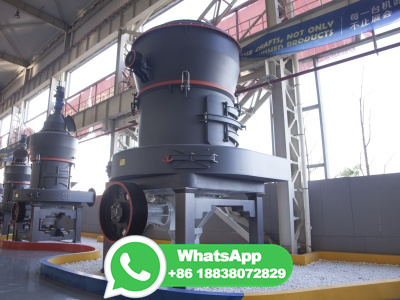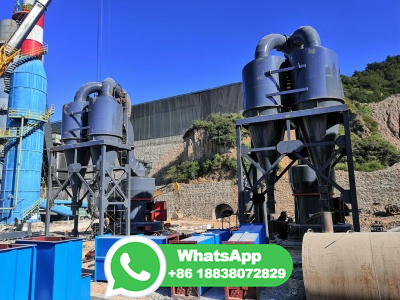
Hopewell Furnace made castings and pig iron from . An ancient alchemy sustained Hopewell Furnace: transforming mineral into metal. Since 4,000 years ago, when humans learned how to free iron from ore, the basic process has not changed. Iron oxide is heated in an intense flame fed by carbon fuel. Oxygen in the ore combines with carbon ...
WhatsApp: +86 18203695377
Before iron ore can be used, oxygen must be removed from it. Known as 'reducing', this can be done either in the blast furnace, where hot air is injected into a continuous feed of coke, sinter and lime, or by the direct reduced iron (DRI) process. The result from both is liquid iron, which is then transported to the basic oxygen furnace. The blast furnace process also produces two ...
WhatsApp: +86 18203695377
The inputs and outputs of a blast furnace. And of course we get pig iron as output. Now if you read the literature, it seems like depending on how you run this process you could get output with ...
WhatsApp: +86 18203695377
The molten iron thus produced is known as pig iron. The slag from the blast furnace consists of calcium, aluminum and ferrous silicates. It is used as a ballast for rail roads, mixed with tar for road making and in the cement manufacture. The pig iron from the blast furnace contains 90 to 92% of iron.
WhatsApp: +86 18203695377
The Iron and Steel Manufacturing Process Steel mills operate in two distinct ways. The traditional production method occurs at large, vertically integrated mills, which use ovens to heat coal into coke;1 combine the coke with iron ore in a blast furnace to produce pig iron; and then melt the pig iron in a basic oxygen furnace to produce liquid ...
WhatsApp: +86 18203695377
Mauritania's top export is iron ore, which is shipped to China and other markets where it's converted to "pig iron" and later refined into steel in blast furnaces using coking coal. Those ...
WhatsApp: +86 18203695377
Blast furnace slag is a byproduct resulting from the smelting of iron ore into pig iron, in a process carried out in industrial units called blast furnaces, where the oxides contained in iron ...
WhatsApp: +86 18203695377
The pig iron itself does not have much use but it finds a great number of applications when converted into steel alloys in the steel industry. The process of manufacturing pig iron is a bit complicated. The following steps explain the same as simply as possible. Raw MaterialsThe raw materials used in the blast furnace to produce highquality ...
WhatsApp: +86 18203695377
Want to support this channel and help us preserve old films? Visit https:// short film from Academy Films of Hollywood dates...
WhatsApp: +86 18203695377
As the blast passes through the burning fuel it takes from the oxide of iron its oxygen, passing out as carbonic oxide, and thus compels it to yield up the whole of the metal iron. The iron, as it melts in the furnace, combines with the carbon of the fuel, and becomes cast iron. Although the process involved in refining purifies the iron to a ...
WhatsApp: +86 18203695377
Iron and steel mills comprise integrated producers and minimills. Integrated steel producers generally begin the process by reducing iron ore to molten pig iron in a blast furnace, although some buy slabs and coke on the open market to reduce costs. The pig iron is then combined with scrap in a basic oxygen furnace to make molten steel.
WhatsApp: +86 18203695377
Blast furnace ironmaking technology, by far the most important ironmaking process, is based on coke and iron ore pellets (or sinter) to produce liquid iron. However, there has been a worldwide effort searching for a more economical and environmental friendly alternative process for the production of liquid iron.
WhatsApp: +86 18203695377
Therefore it is provided a process for making pig iron in a blast furnace comprising the steps of : providing iron ore and coke, preferably in alternate layers, at the top of the furnace; injecting hot blast through at least one blast tuyere located close to or in the vicinity of the bottom of the furnace; injecting pulverized coal through at ...
WhatsApp: +86 18203695377
Modern steel mills and directreduction iron plants transfer the molten iron to a ladle for immediate use in the steel making furnaces or cast it into pigs on a pigcasting machine for reuse or resale. Modern pig casting machines produce stick pigs, which break into smaller 410 kg piglets at discharge. References
WhatsApp: +86 18203695377
In the blast furnace process, iron ore and reducing agents ( coke) are transformed into hot metal and slag, which is formed from the gangue of the ore and the ash of coke. ... Table Production of pig iron in top five countries in world (Mt) Full size table. The production rate of BF, also known as smelting rate or output, is depended on ...
WhatsApp: +86 18203695377
Further, solid pig iron is used as "pure" raw material and carbon source in EAFs. The blast furnaceBOF route produces almost 66% total crude steel, and EAF route accounts for about 31%, while the blast furnaceopen hearth process, which dominated steelmaking in the first half of the 1900s, had only a share of about 3% left [7].
WhatsApp: +86 18203695377
The slag produced at blast furnace during pig iron manufacturing is called blast furnace slag. The slag produced at steel melting shop is known as steel slag. Slag output obtained during pig iron and steel production is variable and depends mainly on composition of raw materials and type of furnace. Typically, for ore feed containing 60 to 65% ...
WhatsApp: +86 18203695377
From an operational perspective, pig iron appears to be a more favorable choice as an OBM source in electric steelmaking. Currently, pig iron is mainly produced through the blast furnace route. Blast furnace operation and its ancillary processes contribute the largest amount of CO 2 per ton of steel production, due to use of coal and coke.
WhatsApp: +86 18203695377
conventional blast furnace processes. Hydrogenbased direct reduction uses hydrogen instead of coal as a reagent to reduce iron ore to pig iron, eliminating the CO 2 emissions from the equivalent process in a traditional blast furnace. However, direct reduction requires an EAF to heat up the reduced iron for the consecutive process
WhatsApp: +86 18203695377
It's a long process which begins with Concentration through calcination roasting. Concentration removes the water and other volatile impurities such as sulphur and carbonates. This concentrated ore is mixed with limestone (CaCO 3) and Coke and fed into the blast furnace from the top. It is in the blast furnace that extraction of iron occurs.
WhatsApp: +86 18203695377
A small community, the first site of the town of Munising, sprang up around the furnace. The furnace first went into blast on June 28, 1867, and within a year was producing up to twenty tons of pig iron each day. The smelting process relied on a variety of resources and transportation networks to produce the finished product. Iron ore was mined ...
WhatsApp: +86 18203695377